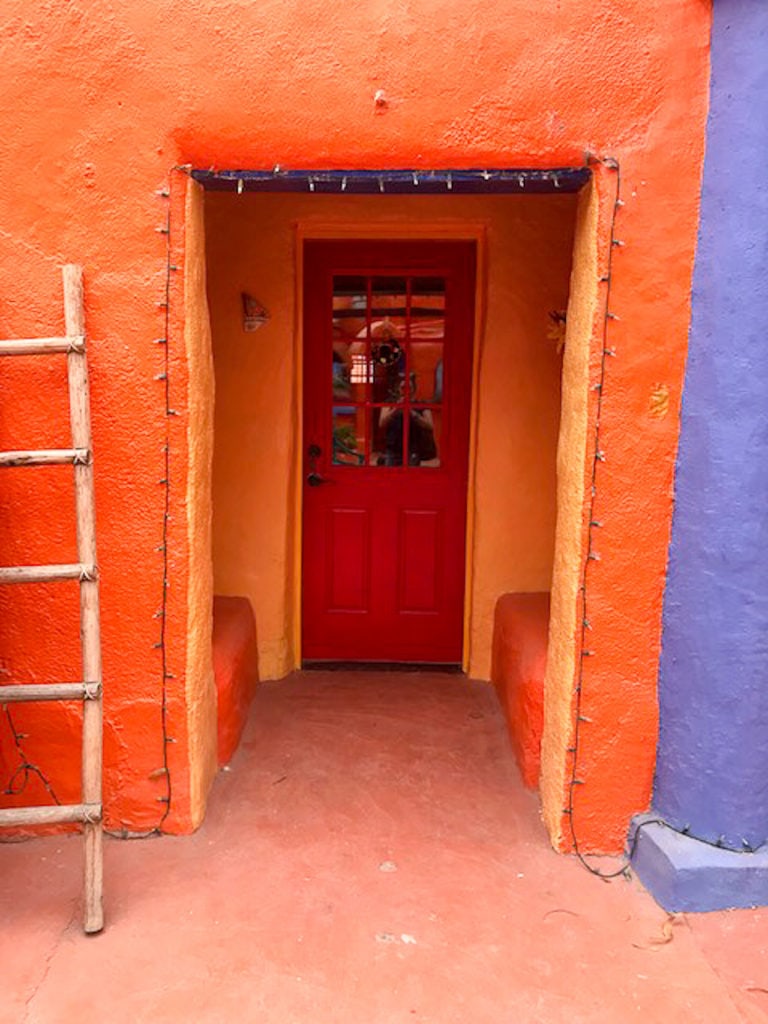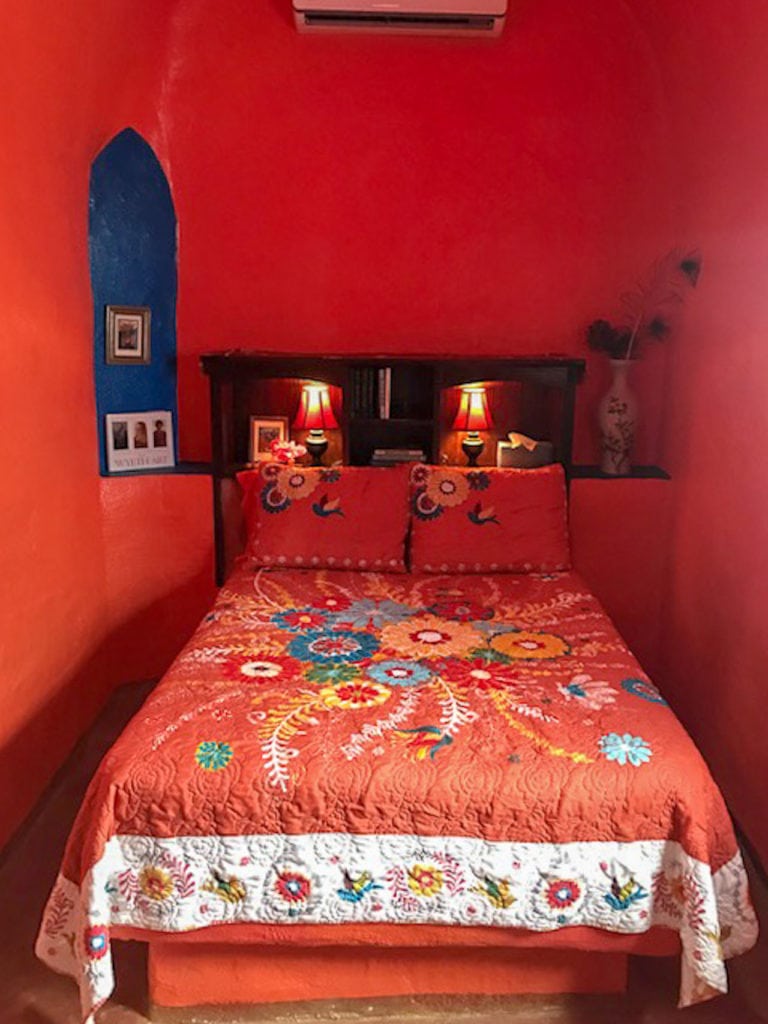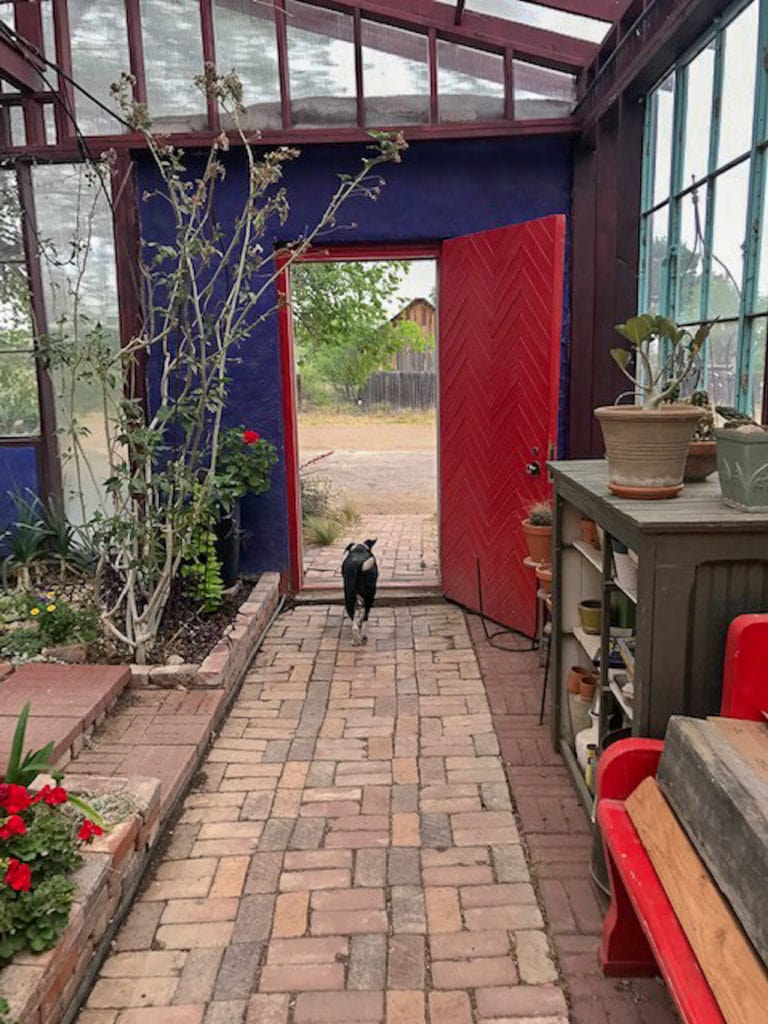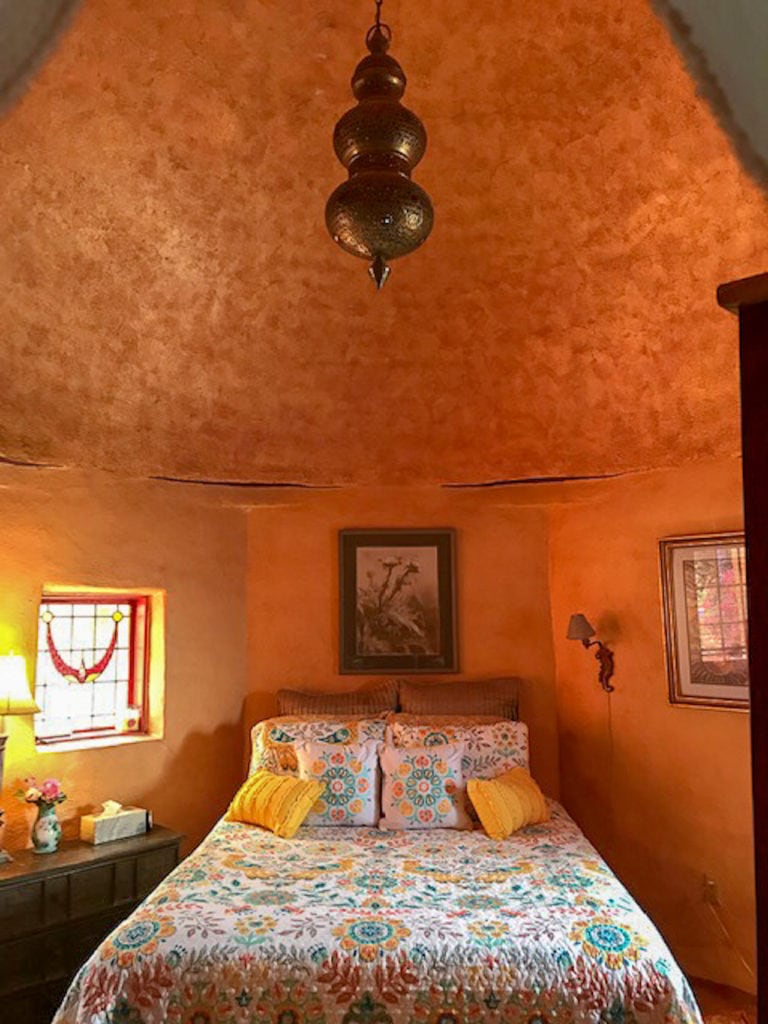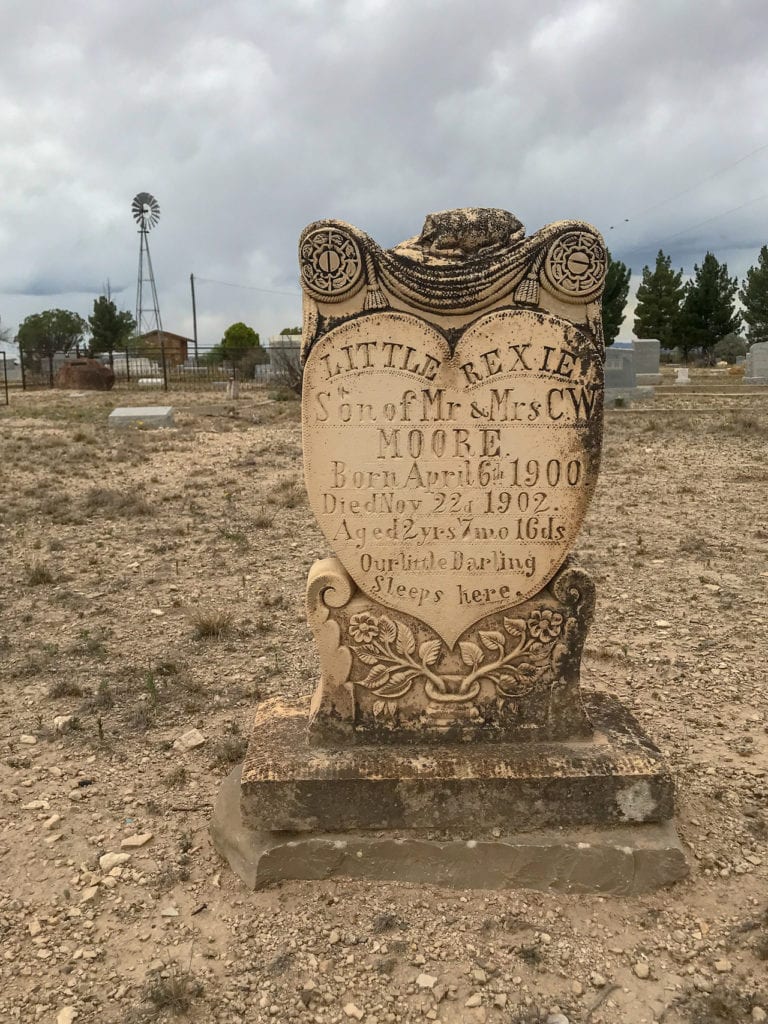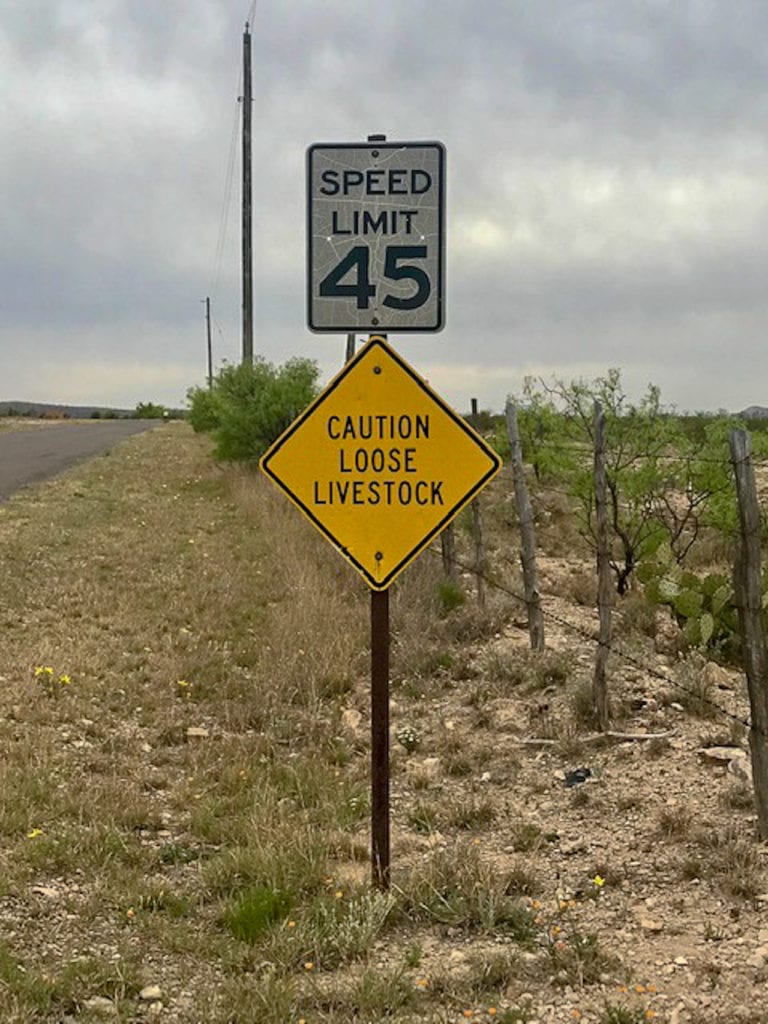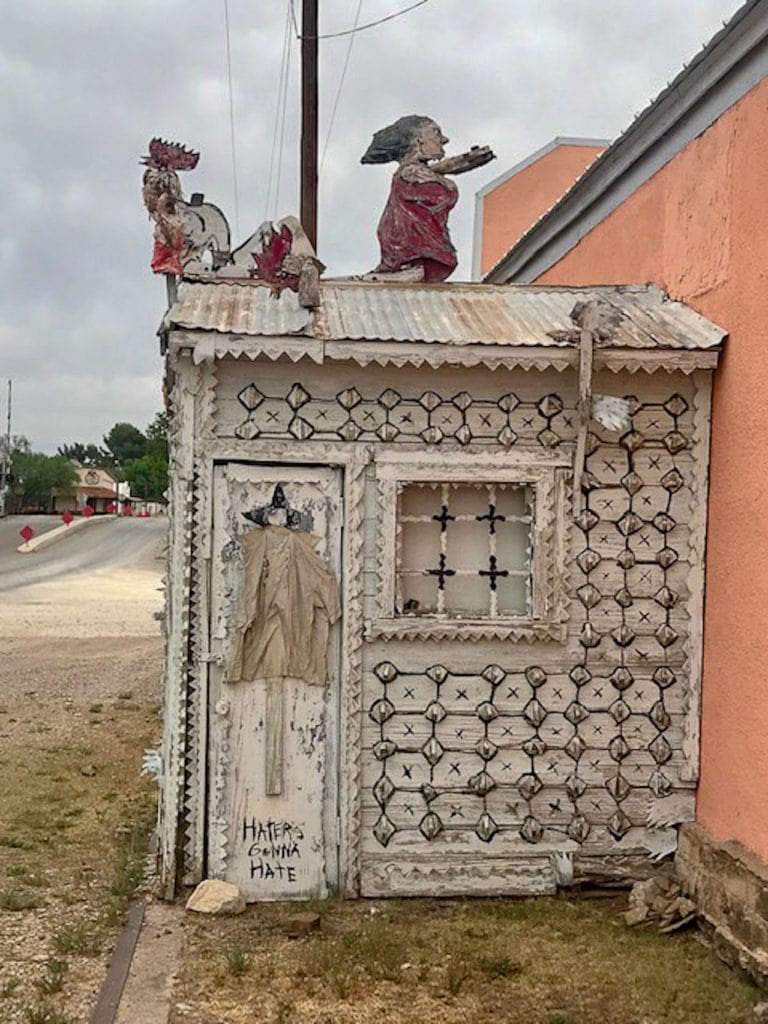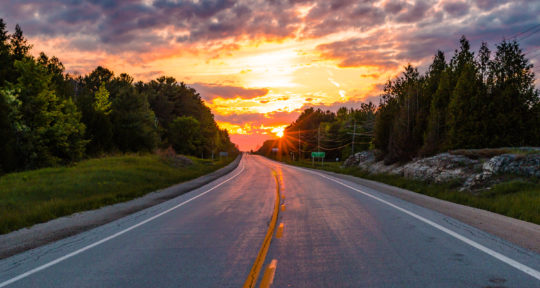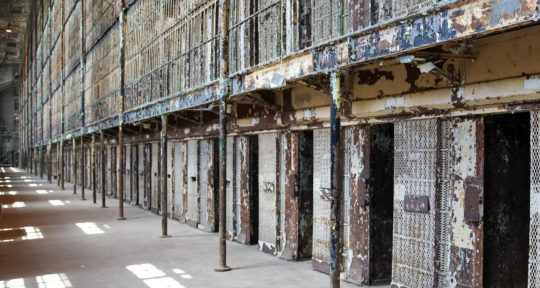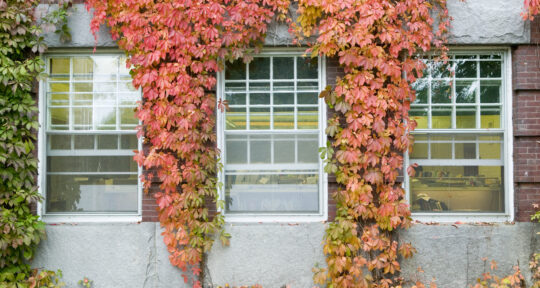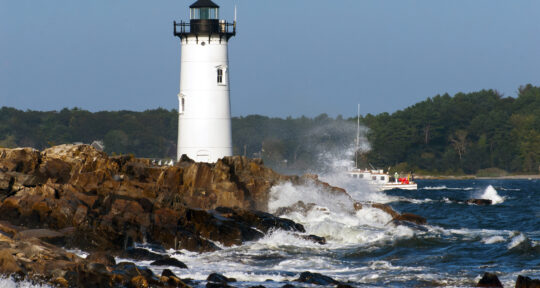We were an unlikely match, Marathon and I. We met when I was a sorority girl with high maintenance hair and not a lick of experience roughing it in the desert. Or anywhere. I didn’t know how I’d survive a week in the electricity-free throes of nature. But there I was in Big Bend National Park, which is inextricably linked to Marathon, its proxy gateway. Nights consisted of lying awake in a freezing tent as javelina snorted lullabies inches from my face.
For those unfamiliar, javelina are also called skunk pigs, and they look exactly how you think they look. But by the end of the week, the charmingly grotesque creatures had grown on me. I didn’t know it yet, but soon so would Marathon.
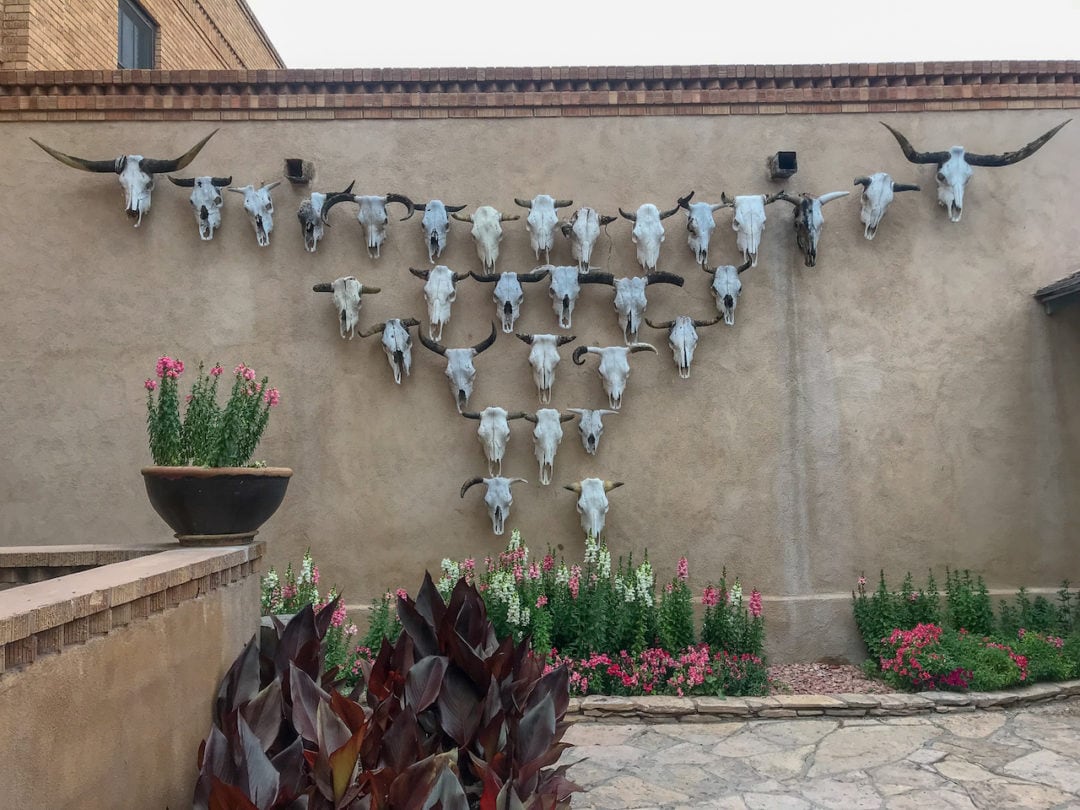
I’m about to share something sacred and trust you will tell precious few: Marathon, the sleepy, dusty town at the foot of the Glass Mountains, is Texas’ best kept secret. And it’s pronounced Mara-thun. Say Mara-thon and everyone will know you’re not from around these parts. Thanks to its lack of pollution, moderate elevation, and remote geographical location, it’s earned the rare distinction as a Class 1 Dark Sky. That’s science-y jargon for being able to see lots and lots of stars.
The town is home to one blinking traffic light, one square mile of land, and more than one goat for every person who lives there. Unlike Marfa—the artsy hipster haven an hour’s drive west, where rents and property taxes are soaring due to its popularity—Marathon’s population of 500 has decreased somewhat over the past few years. There are plenty of reasons why that’s not a bad thing.
Marathon’s faux mega-chain
For this sojourn to Marathon, there is no itinerary and no desire for one. Unfortunately, there’s also no availability at the Gage Hotel, the yellow-brick crown jewel of Marathon and object of my obsession since college. The two-story building has, relatively speaking, towered over the town since 1927.
My travel companion and I are 15 miles outside town when we spot the tiny Target Marathon, a D.I.Y. installation someone intrepidly fashioned in the pitch black night a few years ago out of a tiny, abandoned railroad structure.
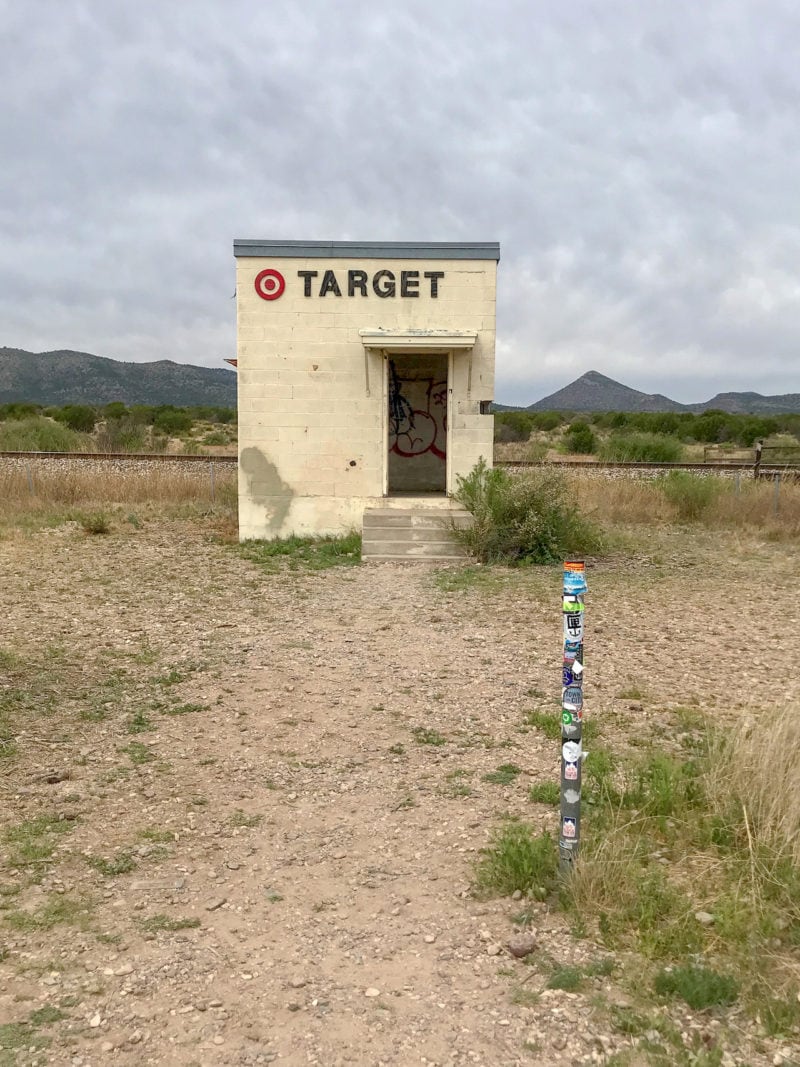
It’s eerily quiet inside Marathon’s graffitied counterpart to Marfa Prada. Quiet, that is, except for the swarm of hopped-up hornets that ambushes me. It’s also quiet outside of the faux mega-chain. Not a single car passes during this 10-minute stop. This makes it feel extra surreal when a seemingly endless army of giant military tankers choo-choos past us.
Most businesses in Marathon are closed on Mondays. Not the Oasis Café. The two-woman operation on Main Street is run by the French-ponytailed Phoebe Fowler, an endearingly acerbic 64-year-old who has lived in Marathon for 30 years. The petite firecracker slings chicken fried steak and huevos rancheros and, today, hilarious stories about ex-husbands. She speaks quickly and with a conviction in her tone that’s infectious, and she calls everyone “sweetheart.” Her stories make you want to stay longer, even though the diner is now well past closing time. But she’s too kind to kick you out.
“Every little thing you see here has a story.”
“I love it here. Not a lot of hoo-rah goes on,” she says. “Rarely do we hear sirens. But when we do, we know what’s up within minutes. We know who they’re following and where they’re going and why. In just a few minutes. It’s that kind of town.”
She says she’s been there and done that with big cities like Houston and San Antonio. “It takes a special kind of person to live here. We’re unincorporated so we don’t have a mayor, a city police department, or a city council. I’ve been here a long time. It’s cool,” she says.
Wearing many hats
In a town as small as Marathon, locals end up wearing a lot of hats. Especially Fowler, who has been the librarian at the tiny Marathon Public Library and worked the front desk at the Marathon Motel. She also used to substitute teach at the high school, where the football stadium has one diminutive set of bleachers for both the home and away spectators. “I was the ISS queen,” she says. (That’s in-school suspension.)
Eventually she has to close up, so she tells us to go to Eve’s Garden Bed and Breakfast: “They’ll talk to you.”
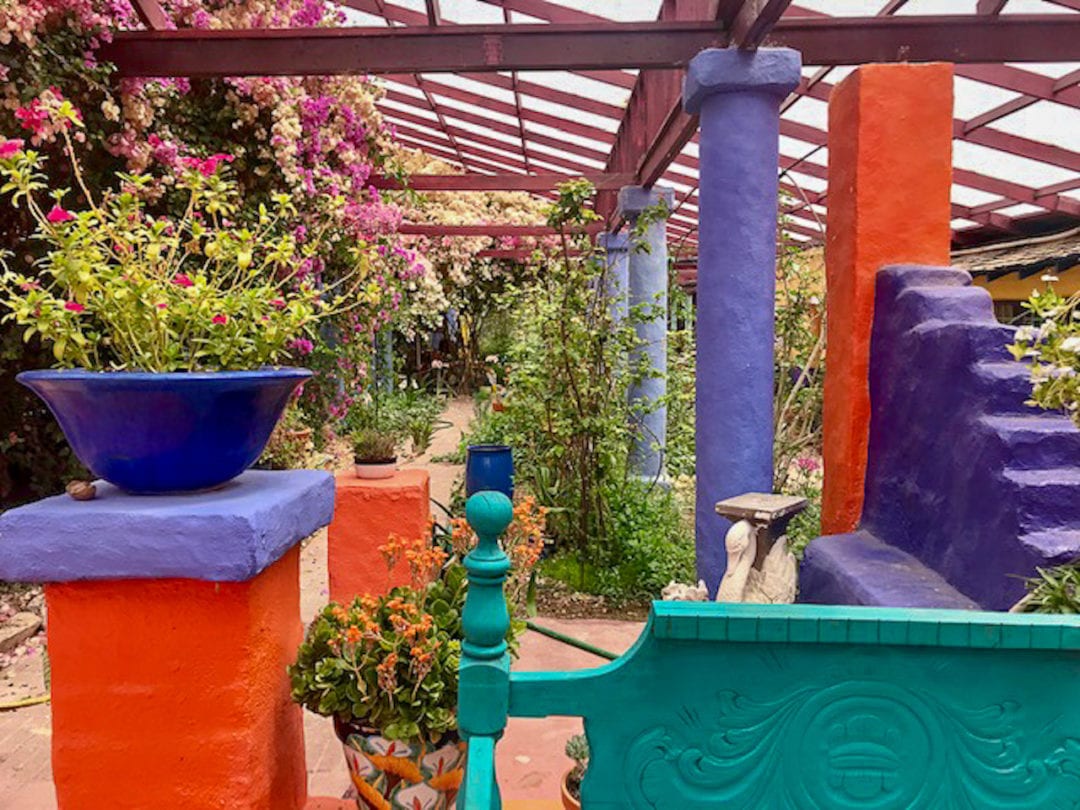
We show up unannounced.
Constructed around a house originally built in 1905, Eve’s distinguishes itself for a lot of reasons. It takes up an entire city block. Every surface of its interior and exterior is painted in wild shades of purple, orange, blue, and various other ROYGBIV iterations. What’s especially unusual is that it’s constructed out of papercrete. Papercrete is like papier-maché but sturdier. They thought about using adobe, but it was too much of a pain.
A gateway to Eve’s Garden. | Photo: Rachel Williams A room at Eve’s Garden Bed & Breakfast. | Photo: Rachel Williams The patio of Eve’s Garden. | Photo: Rachel Williams A room at Eve’s Garden Bed & Breakfast. | Photo: Rachel Williams A cactus adds to the decor at Eve’s Garden. | Photo: Rachel Williams
Alaine Berg, along with her husband Noble Baker, helps her mother-in-law Kate Thayer run the place. Berg has lived in town on-and-off for 20 years. Originally from North Dakota, she is exceedingly chill, and reminiscent of a younger Edie Brickell. A black border collie mix named Lady, who belongs to a truck driver who’s away a lot, follows us around for the impromptu tour. Alaine lost her own dog, Bubbles, a few weeks ago after it got hit by a car—and somehow does not cry while telling the story. But Bubbles’ spirit is alive throughout the structure. There’s a shrine, and intermittent Andy Warhol-esque portraits of the shaggy blonde dog.
“Every little thing you see here has a story,” she says.
The allure of the Gage Hotel
To get to Marathon, you have to really, really want to get there. You could say it’s a “blink and you’ll miss it” town, but one could easily miss it even without blinking.
Either way, it sure is an unlikely place to find a hotel like the Gage. “Luxury” and “oasis” are perhaps overused words in the tourism industry, but in this case they’re just accurate. With its glistening pool, pristine Gage Gardens, and 12 Gage restaurant—which offers a smoked bison strip loin and a drink called the Prickly Pear Pura Vida Margarita that’s as close to perfection as a margarita can get—it’s easy to understand why the place books up months in advance.
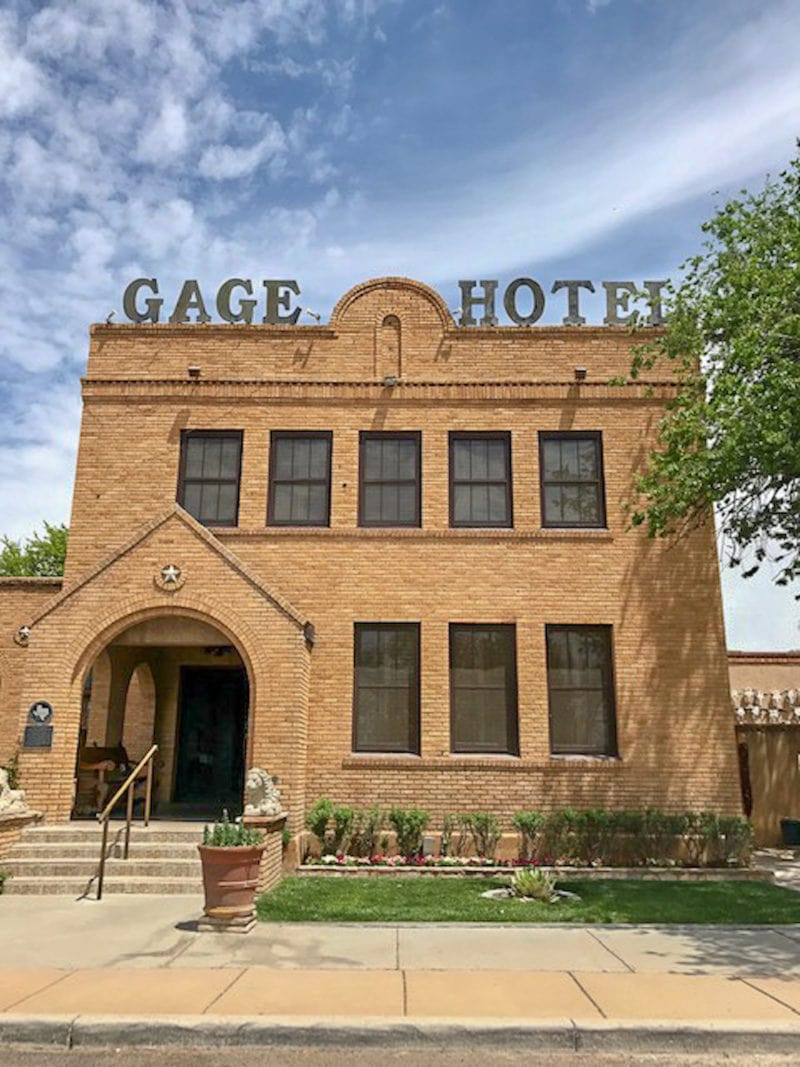
By 3 p.m. there are still no cancellations at the hotel. So I meditate over a spicy cocktail at the White Buffalo Bar, silently willing someone—anyone—to cancel a reservation. (Should you visit Marathon, please plan more carefully than I did.)
A sun-drenched, Hawaiian shirt-clad man from Key Largo asks the bartender if the winter is over yet. It is. A couple from Montana tells me Beyoncé and Matthew McConaughey visited recently, which I google for veracity. As it turns out, this is extremely true.
To get to Marathon, you have to really, really want to get there. You could say it’s a “blink and you’ll miss it” town, but one could easily miss it even without blinking.
At 4, I try the front desk again. “We have one room available,” the woman tells me. The clouds roll back, the waters part, and I’m a giddy college student again. The Gage still uses old-fashioned keys, and in 2019 that kind of dedication to simplicity is just sweet. The well-appointed rooms have clearly been renovated, but ours looks and smell just as I remember—like a combination of leather saddlery and 1927.
Unlike last time, I’ve got a private bathroom. Before, there were dormitory-style bathrooms down the hall. It wasn’t nearly as strange or uncomfortable as it sounds. There are still no TVs in the rooms.
West Texas oasis
Our first night in Marathon during that camping trip years ago, my best friend and I scurried from our outpost at the Gage across Highway 90 to the honky tonk that used to be there. It was hopping. We two-stepped with cowboys whose starched Wrangler jeans were as crunchy as the granola that had come to characterize our personalities (you know, because of the camping outside thing). It was like a scene out of Urban Cowboy, minus the urban part.
I wondered where all these people had come from, and how this place in the middle of nowhere was so alive. It was surreal. Because you also could have reasonably taken a nap on the road in front of it without getting hit by a car.
Little Rexie’s headstone. | Photo: Rachel Williams Wild, wild West Texas. | Photo: Rachel Williams A decorated shed. | Photo: Rachel Williams
The Gage takes me back to the first time I remember truly surprising myself. I had been dreading that college trip. But it was the best week of my life. That’s not hyperbole. It was the proper dose of self-awareness I needed at 21. A few years later, it still doesn’t hurt.
Marathon is the humble little West Texas oasis that knows exactly who it is, and doesn’t pretend to be anyone or anything else. It’s been called the next Marfa. I hope it’s not. It’s fine just the way it is.
